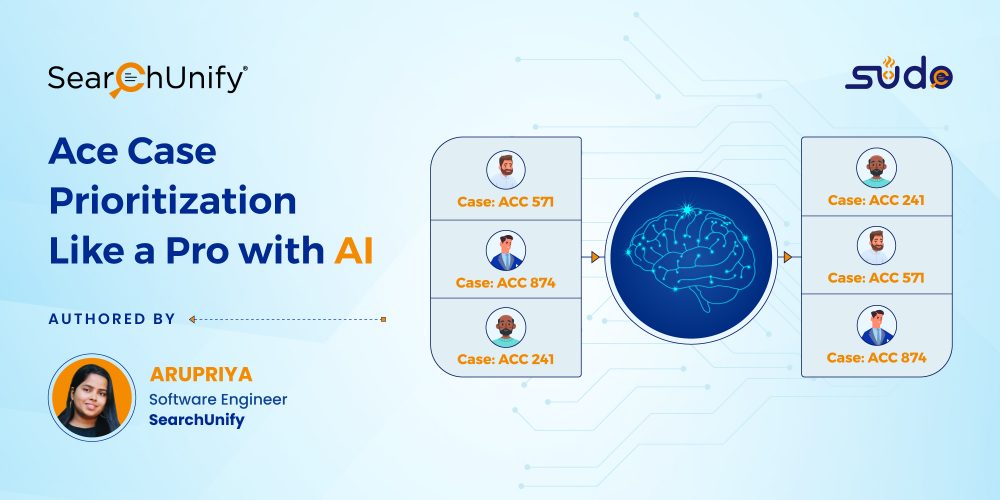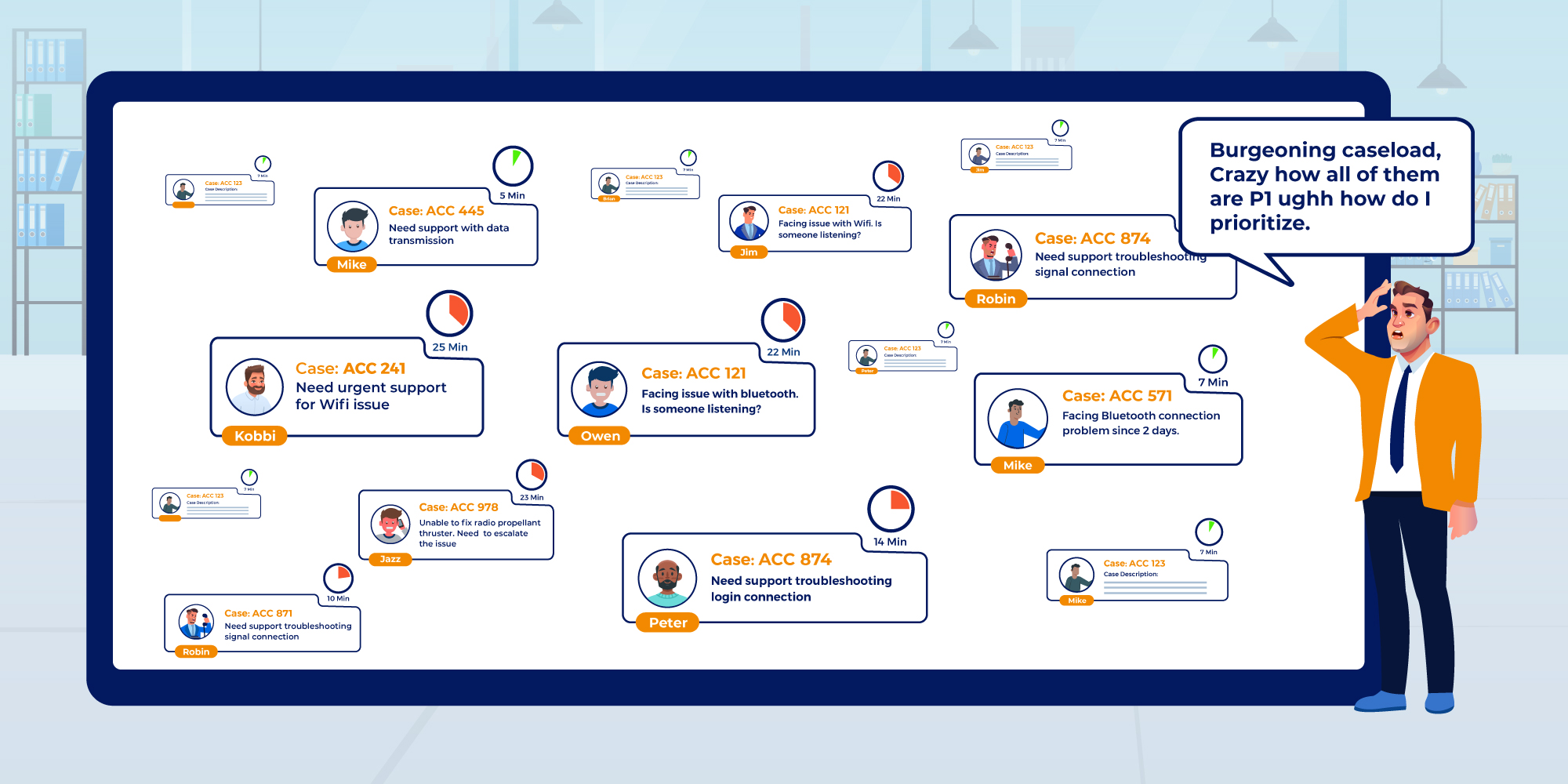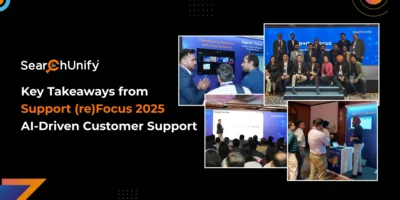
Did you know that the world record for putting a customer on hold by a support rep is believed to be 15 hours, 40 minutes, and 1 second? It resulted from a phone call from an Australian man to Airways. If this penetrates your soul and makes you want to speed up the support ticket resolution process right from the start, then this is a must-read post for you.

Andrew Kahn phoned Qantas Airways at 7:22 PM on Wednesday and hung up the call at 11:01 AM on Thursday to confirm his trip from Australia to New York City.
Even in the present era, not much has changed. Customers still bear the brunt of waiting in long queues be it phone calls or support tickets.
However, with AI in place, things are looking better in the coming times.
We’ve discussed in our previous blog post about the classification, and the important step to speedy resolution is Case Prioritization. Let’s get into the details.
Nail Your Next Support Ticket with Intelligent Case Prioritization
With millions of support tickets being created every day, solving customer queries quickly becomes an insurmountable task for many organizations. And since every customer is important, prioritizing their tickets becomes difficult for the support agents.

This is where intelligent case prioritization comes into play.
For the uninitiated, case prioritization refers to managing support requests based on the sentiment, urgency, and severity of the issue reported. Without a defined prioritization method, your support tickets will always be cluttered, leading to unproductive outcomes.
Usually, there are two schools of thought when it comes to ticket prioritization. Let us dig into each one of them in detail:
- Traditional/Universal Method
- Intelligent (AI-powered) Method
A. Old is Not Always Gold: Exploring Traditional Method
There is no cookie-cutter approach to setting the priority levels of the tickets. It usually depends on the business, its operations, its customers, and other factors. However, there are some traditional variables that when weighed make this taxing job much easier. What are they?
Keep reading to find out.
1. First In First Out (FIFO)
When in doubt, it’s always best to respond to inquiries as soon as they come in. Once the support agents get a ticket, the most equitable way to tackle them is by resolving them in the order they are received.
2. Create Service Level Agreements (SLAs)
Service-level agreements, also known as SLAs, outline the priority levels of your support tickets. They ensure the support agents respond to high-priority tickets first and prevent lower-priority tickets from becoming backlogged indefinitely by setting stipulated timelines for each.
3. Let Customers Mark Their Urgency
Your customers might sometimes have different criteria for calculating urgency than your organization does, but letting them manually mark their level of urgency is a great way to establish trust and strengthen your relationship with them.
4. Categorize the Tickets and Keep Your Customers in the Loop
Sales questions from casual shoppers can wait 6-18 hours, whereas troubleshooting questions from corporate subscribers need to be addressed quickly. The best way to do this is by categorizing the requests and marking them as “sales,” “troubleshooting,” “bugs,” “product issues,” etc.
It is advisable to keep your customer in the loop throughout the ticketed journey by letting them know that their request has been received and will be addressed in a timely manner.
5. Simplify Your Process
If complicated requests are routed to new agents without any prior training and then transferred to respective professionals, there will be multiple hiccups along the way. This might drain them and showcase the incompetency of your team. Therefore, it is always better to simplify and realign your process in a manner where requests are sorted out first and transferred to the respective departments and experienced agents.
For instance, requests from customers with priority access or marked as “technical” should be prioritized and routed to IT for a quick resolution.
B. Stepping Into the Future with Intelligent Case Prioritization
Humans and machines produce far more data than they are capable of retaining, interpreting, and using to make complex decisions. But, AI has successfully changed the narrative by providing automated means to determine and resolve high-priority requests, anticipate end results, resolute quicker, and much more.
This is why it is said “Don’t waste time on AI for AI’s sake. Be motivated by what it will do for you, not by how sci-fi it sounds.” – Cassie Kozyrkov, Chief Decision Scientist at Google
It is done by measuring and aligning three important variables, which include:
1. People-oriented: In this variable, the bots help crawl and identify the historical data of customer interactions to determine their frustration level. Apps like Escalation Predictor are a way to go! It helps identify customer sentiments and gauge dissatisfaction, enabling the agents to empathize, be proactive, and reduce escalations. Additionally, by curtailing ticket escalations and streamlining customer service delivery with AI, this modernized app help facilitate case triaging and routing. All of this reduces MTTR (Mean Time to Resolution).

2. Process-oriented: Through automation of ticket assignment, Escalation Predictor helps handle misclassifications. This helps the agents in deciding which ticket to resolve first and prioritize by deploying various retrieval techniques like stemming, lemmatization, encoding, verbatization, stop-words removal, taxonomy, and more.
3. Time-oriented: By deploying Agent Helper that populates and presents top knowledge articles of similar cases, SearchUnify helps the support agents to close the tickets quickly. It also creates logs of user interactions prior to case creation so that swift resolution can be provided. This helps reduce the overall turnaround time by addressing the most important tickets in the queue, thus improving customer experience (CX).
Final Verdict
AI is definitely the futuristic means to prioritize tickets and help resolve them faster. Therefore, a enterprise agentic platform like SearchUnify is always an ideal choice.
Longing to know more about how to revolutionize your support ecosystem and make it more advanced with AI-powered apps? Request a demo of our pristine enterprise agentic platform today!










